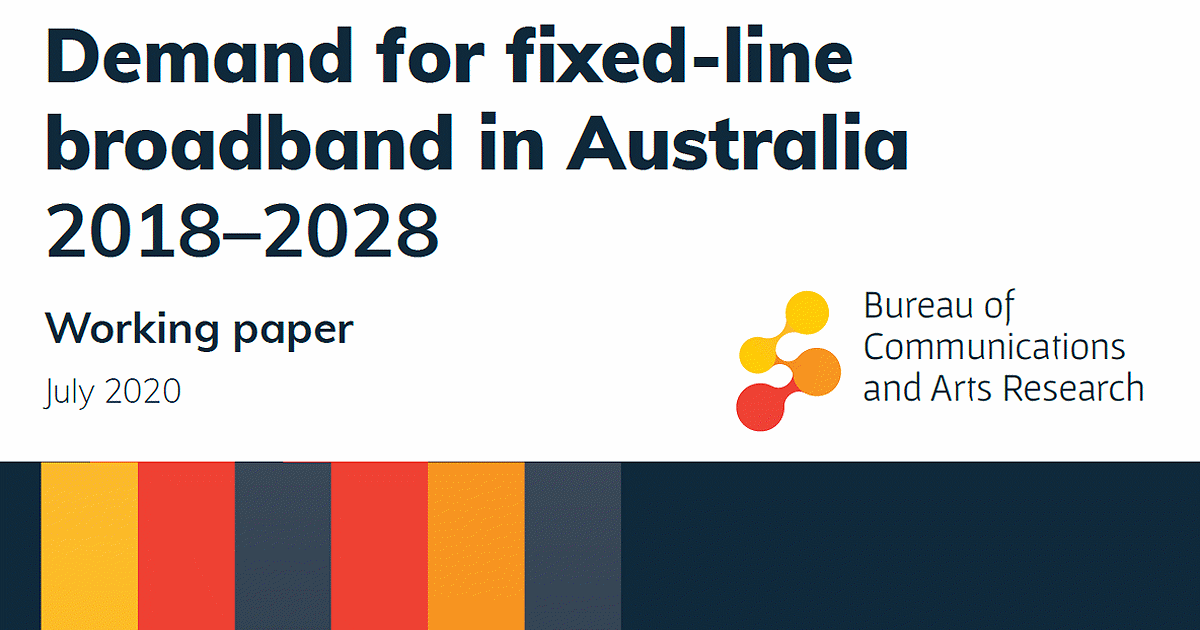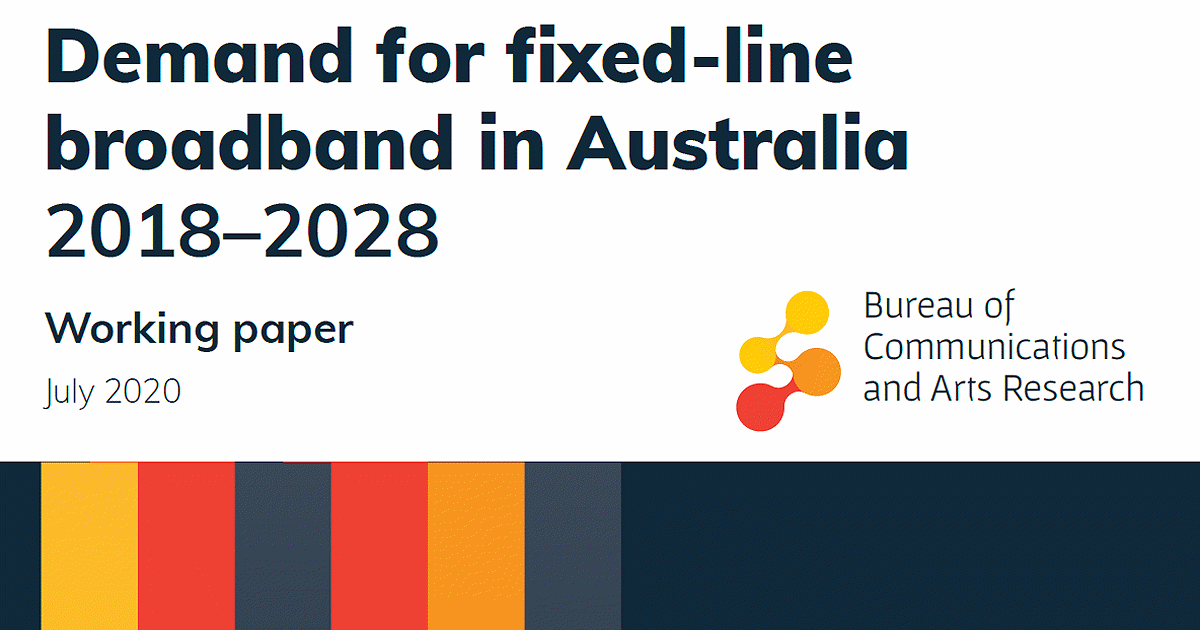A report released early this week takes a shot at predicting how much data Australians will download monthly in 2028 and what their peak bandwidth demand will be.

The Bureau of Communications and Arts Research (BCAR) working paper forecasts average monthly Australian household data downloads will rise from 199 gigabytes in 2018 to 767 gigabytes in 2028; representing a compound annual growth rate of 14 per cent over the forecast period - well below the 42 per cent annual growth rate between 2010 and 2018.
The BCAR estimates 95 per cent of Australian households had peak bandwidth demand of 24 megabits per second (Mbps) or less in 2018, and this forecast to increase to 56 Mbps or less in 2028.
For small business, 95 per cent had peak bandwidth demand of 24 Mbps or less in 2018, and this is forecast to rise to 37 Mbps or less in 2028 - much less than for households.
"A very small proportion of small businesses are expected to require extremely high bandwidth," states the report. "Only 0.1 per cent of small businesses require bandwidth over 62 Mbps in 2018 and 90 Mbps in 2028".
Is it being too conservative for both businesses and households? A previous working paper from the BCAR on the same topic back in 2018 forecasting requirements out to 2026 met with some criticism in this regard.
While acknowledging video streaming in higher resolution formats will drive demand along with increased adoption of streamed gaming and virtual reality, the BCAR expects advances in compression technology will offset demand to some degree. Whether that will be enough remains to be seen.
The report also acknowledges forecasts "inherently have a degree of uncertainty" and that could lead to figures lead to an over- or underestimation of the demand that eventuates, but it also notes the estimates in the paper may tend to overstate the estimations.
A couple of other interesting facts and forecasts from the report:
- the average adult in a household used the internet for 3 hours a day in 2018. The forecast puts the time online in 2028 at more than 5.5 hours a day.
- the average worker spent more than 1.5 hours in online activities at work daily in 2018 - that is pegged to grow to almost 2.5 hours daily in 2028.
The working paper, Demand for fixed-line broadband in Australia 2018–2028, can be downloaded here.
Earlier this week, Federal Minister for Communications, Cyber Safety and the Arts, Paul Fletcher MP acknowledged the contents of the report; commenting:
"One thing we know about broadband demand is that it does not stand still. We will continue to upgrade the NBN in line with emerging demand over coming years."
But if the Minister's confidence is based on the BCAR figures that turn out to be severely underestimated, that could create an interesting situation. Another issue could be affordability, creating a barrier to households and businesses needing faster speeds.



